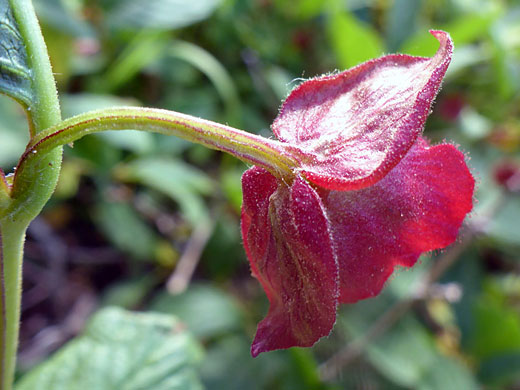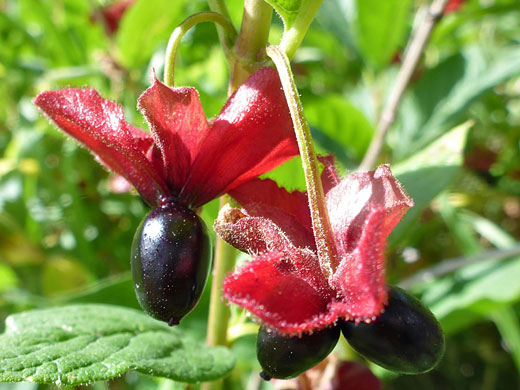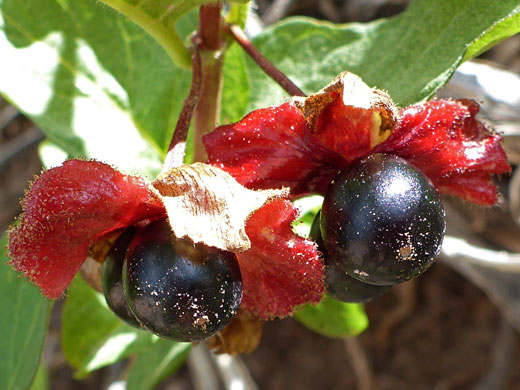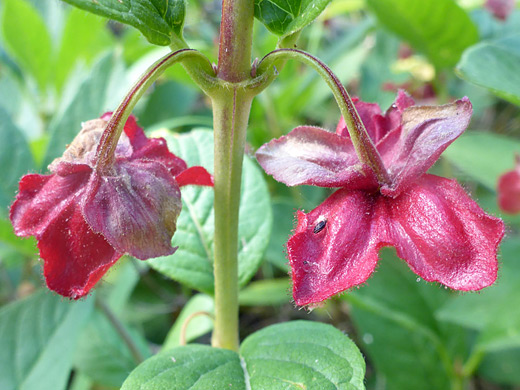Common names:
Black twinberry, twinberry honeysuckle
Family:
Scientific name:
Lonicera involucrata
Main flower color:
Range:
Parts of the Rocky Mountain states and all states to the west
Height:
Up to 9 feet
Habitat:
Streambanks, meadows, woodland; generally moist places, up to 10,000 feet
Leaves:
Alternate, ovate to elliptic, up to 4 inches long, on stalks up to half an inch
Season:
May to August
Flowers of lonicera involucrata are yellow, hairy and tubular, produced as a pair; about half an inch long, opening to five small lobes, approximately equal in size. The style is exserted, the stamens are not. Flowers are drooping. At the base of the flowers are two pairs of red-purple, leaf-like bracts; the inner pair are usually deeply lobed, while the outer pair are unlobed, and somewhat smaller. The bracts are covered by glandular hairs, and they persist after the flowers wither, subtending two shiny, dark purple berries. At this stage the bracts are reflexed, bent back below the plane. Flowers are borne on stalks up to one inch long, and they form at the leaf nodes.
Stems and leaves have a sparse covering of stalked, glandular hairs. Leaves are relatively large, ovate in shape, with a central vein and prominent, parallel side veins.
Stems and leaves have a sparse covering of stalked, glandular hairs. Leaves are relatively large, ovate in shape, with a central vein and prominent, parallel side veins.
All Contents © Copyright The American Southwest | Comments and Questions | Contribute | Site Map









